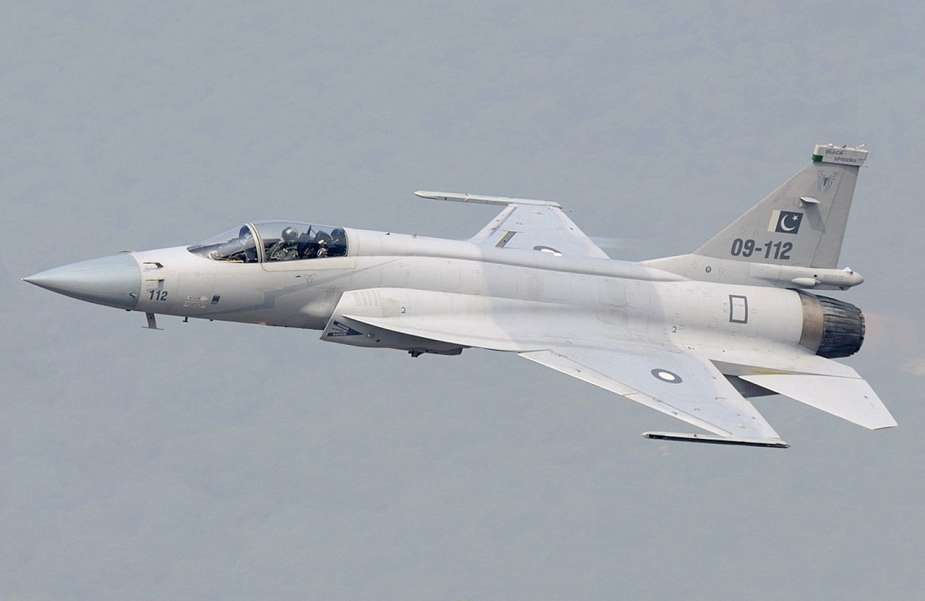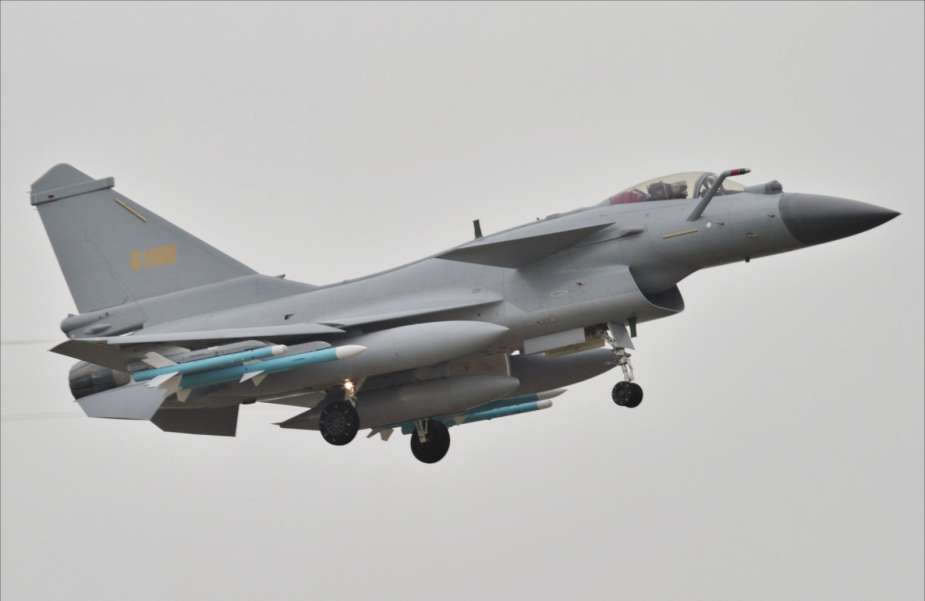Breaking news
Pakistan Air Force deploys Chinese-made arsenal in multinational air war games.
As reported by China Arms on October 25, 2023, the Pakistan Air Force (PAF) utilized a range of Chinese-made military equipment during the Indus Shield 2023 multinational air exercise. This exercise, which saw the participation of air force units from 14 nations, including China, Iran, and Saudi Arabia, aimed to showcase the capabilities of the Pakistan Air Force and foster international cooperation in the field of aerial warfare.
Follow Air Recognition on Google News at this link
 Chengdu JF-17 fighter jet in service with the Pakistan Air Force (Picture source: Wikimedia)
Chengdu JF-17 fighter jet in service with the Pakistan Air Force (Picture source: Wikimedia)
The exercise provided a platform for participating air forces to engage in various training activities, enhancing their understanding of modern aerial warfare concepts, promoting cooperation, and improving interoperability among different nations. It allowed air forces from various countries to demonstrate their skills and operational capabilities.
During the exercise, the Pakistan Air Force employed Chinese assets to counter the Indian air defense, including the S-400 air defense system. The J-10CE fighter played a crucial role in providing air cover and air superiority, enabling the JF-17C and DA-20 to operate effectively. The J-10CE fighter boasts advanced radar and PL-15 air-to-air missiles, which were utilized in countering the Indian Air Force's Rafale F3R fighter.
The DA-20 electronic warfare aircraft, based on the French Dassault Falcon 20 business jet but equipped with a Chinese-made JN-1101F communication countermeasure system, conducted electronic jamming operations, suppressing the radar and communications of the S-400 system. This aircraft also utilized an advanced electronic support reconnaissance system to pinpoint ground radar locations, effectively transmitting this information to the JF-17C fighter.
The JF-17C fighter played a leading role in launching a CM-400AKG air-to-ground missile, employing a low-altitude launch for safety, which proved effective in suppressing the S-400 air defense system used by India. Additionally, China's ZDK-03 early warning aircraft provided command guidance and unified control throughout the exercise.
This exercise highlights the increasing reliance of the Pakistan Air Force on Chinese-made equipment, underlining a deepening military partnership between China and Pakistan. China and Pakistan have maintained diplomatic ties, and this partnership is strategically significant due to China's interest in securing access to the Persian Gulf through Pakistan's geography.
Strategically, China views Pakistan as a partner in ensuring a secure corridor to the sea for its energy supplies and for military power projection in the Indian Ocean Region. Pakistan's growing economic dependence on China, exemplified by the China-Pakistan Economic Corridor (CPEC), further solidifies this partnership, as China becomes an essential economic and defense ally for Pakistan.
Turning to the military equipment used in the exercise, the Chengdu J-10CE, a variant of the Chengdu J-10 Vigorous Dragon, is a medium-weight, single-engine, multi-role combat aircraft designed and produced by the Chengdu Aircraft Corporation. The J-10CE is equipped with advanced capabilities for all-weather operations, featuring a delta wing and canard configuration and fly-by-wire flight controls, making it agile, particularly at low speeds. It is designed for air-to-air combat while also having the capability to carry out strike missions.
The J-10CE comes with a digital fly-by-wire flight control system, aiding the pilot in managing the aerodynamically unstable design of the aircraft. Its advanced avionics include a holographic head-up display (HUD) and a multi-mode fire-control radar designed in China, enabling it to track multiple targets and engage them with air-to-air missiles. The aircraft is armed with a twin-barrel cannon and features hardpoints for mounting various weapons, including air-to-air and air-to-surface missiles, bombs, and rockets. Its power source is a turbofan engine, offering improved performance and thrust vectoring for enhanced maneuverability.
Among the equipment used in the exercise, the CM-400AKG stands out as an air-launched cruise missile designed for engaging ground targets. It is considered an export version of an existing missile and features a range depending on the chosen warhead. With its flexibility in guidance systems, it offers precision targeting through inertial navigation, satellite positioning, infrared/television homing, and a passive radar system. The missile employs a "high altitude launch" strategy, providing enhanced combat survivability, and is capable of reaching supersonic speeds.

J-10B at the Zhuhai Jinwan airport ahead of Airshow China 2018 (Picture source: Wikimedia)


























